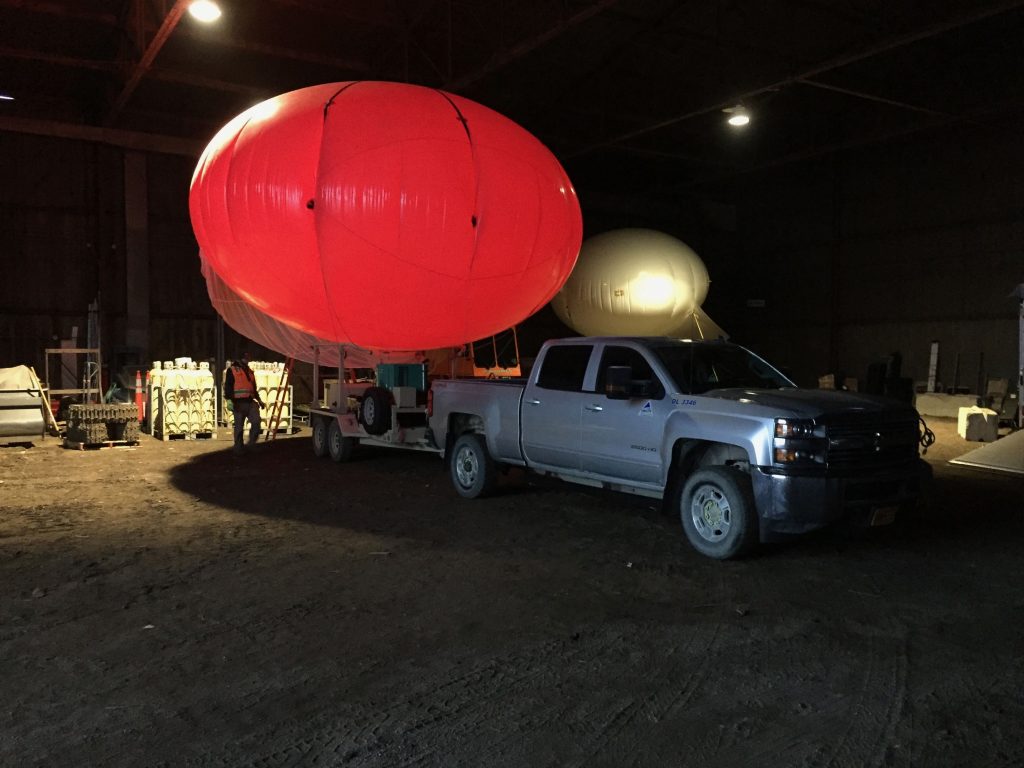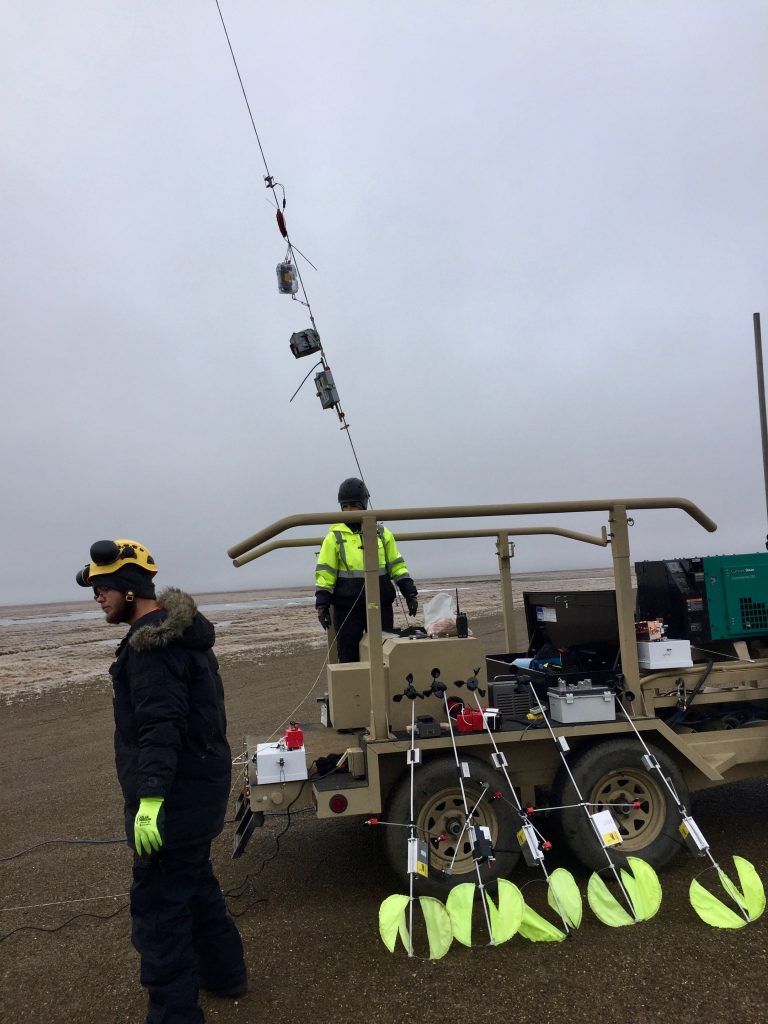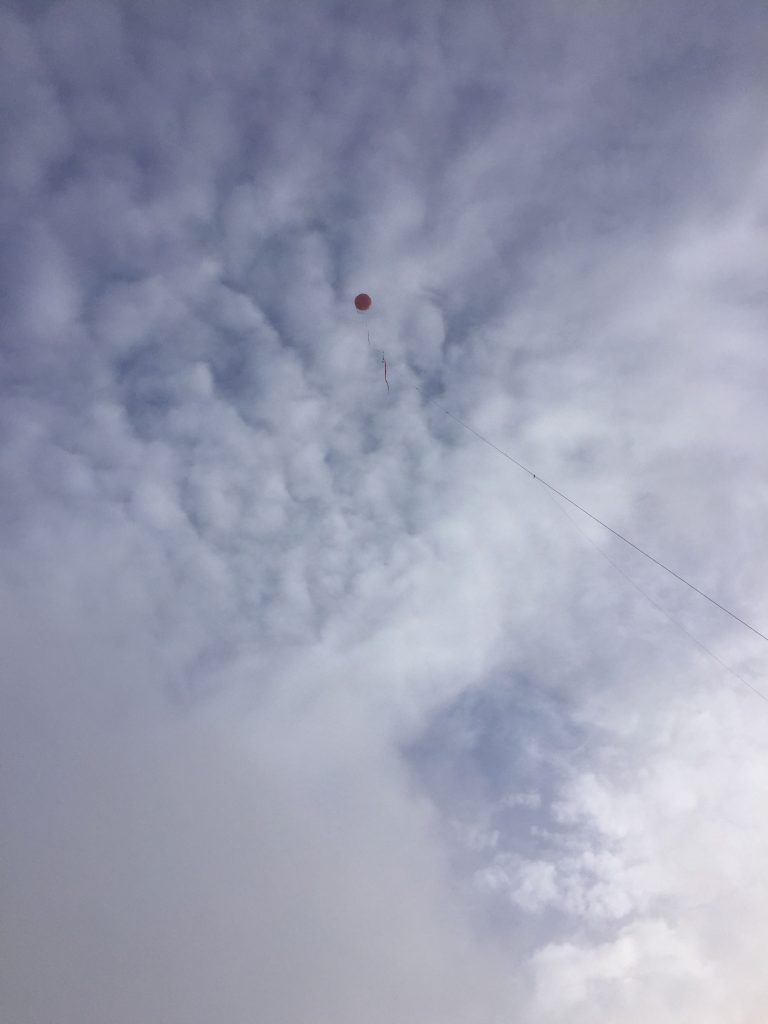If there is one thing I have learned in my field work, it is that things don’t always go according to plan. In fact, things rarely go according to plan. This trip is no different…
We were supposed to start flying the larger unmanned aircraft platform (SeaHunter) for science missions starting yesterday. Unfortunately, we are still in the process of working to finalize the last details of flight permissions for that platform. Yesterday, it actually wouldn’t have made much of a difference because the weather conditions (freezing fog, drizzle, snow, wind) would have kept us grounded anyways. This morning we actually had a bit of snow on the brown tundra – winter is definitely coming on the north slope. But looking into next week it looks like the weather will improve a bit, with winds coming down and more glimpses at the sun. So, I’m really hoping that UAF can work some magic to get those last flight permissions worked out so that we can go fly!

Casey prepares the aerostat and helikite for flight.
In the meantime, I have been staying busy helping the tethered balloon team from Sandia National Laboratory fly their equipment. It’s a different system than I’m used to – the balloon can only go up and down but can stay up for a long, long time if needed. Just as with the unmanned aircraft, there are weather challenges – too much wind is not good, and if flying through the clouds, enough ice build up can weigh the balloon down and reduce its ability to stay in the air. But, it can carry a significant amount of instruments to provide some unique perspectives on the things we are here to understand.

Casey and Dari attaching sensors to the tether of one of the balloons during flight.
On Friday, we flew two different balloons. The first was a 79 m3 aerostat. This thing looks like a giant tomato and can carry a lot of equipment up to around 1.5 km altitude. We were able to get it up to around 900 m to get a nice profile of thermodynamic and aerosol properties, along with some information on the amount of liquid water in the cloud layer we passed through. Because the winds were starting to pick up, the second flight was with a smaller 35 m3 helikite. This balloon can’t carry quite as much stuff, but we used it to conduct two consecutive profiles up to around 500 m altitude. This was enough to get through a low cloud layer and into a strong inversion layer above the cloud. This might be counterintuitive, but it was substantially warmer (and drier) above the cloud layer. In the cloud, it was as cold as -4 C, but up above it was 3-4 C as we went through the inversion. The dryness of the inversion also provided a great opportunity to rid our sensors of the ice that built up as we flew up through the cloud layer. All in all a great day of flying for POPEYE, and we’re hoping to do more today (Sunday)!

The aerostat soaring high above the clouds.
